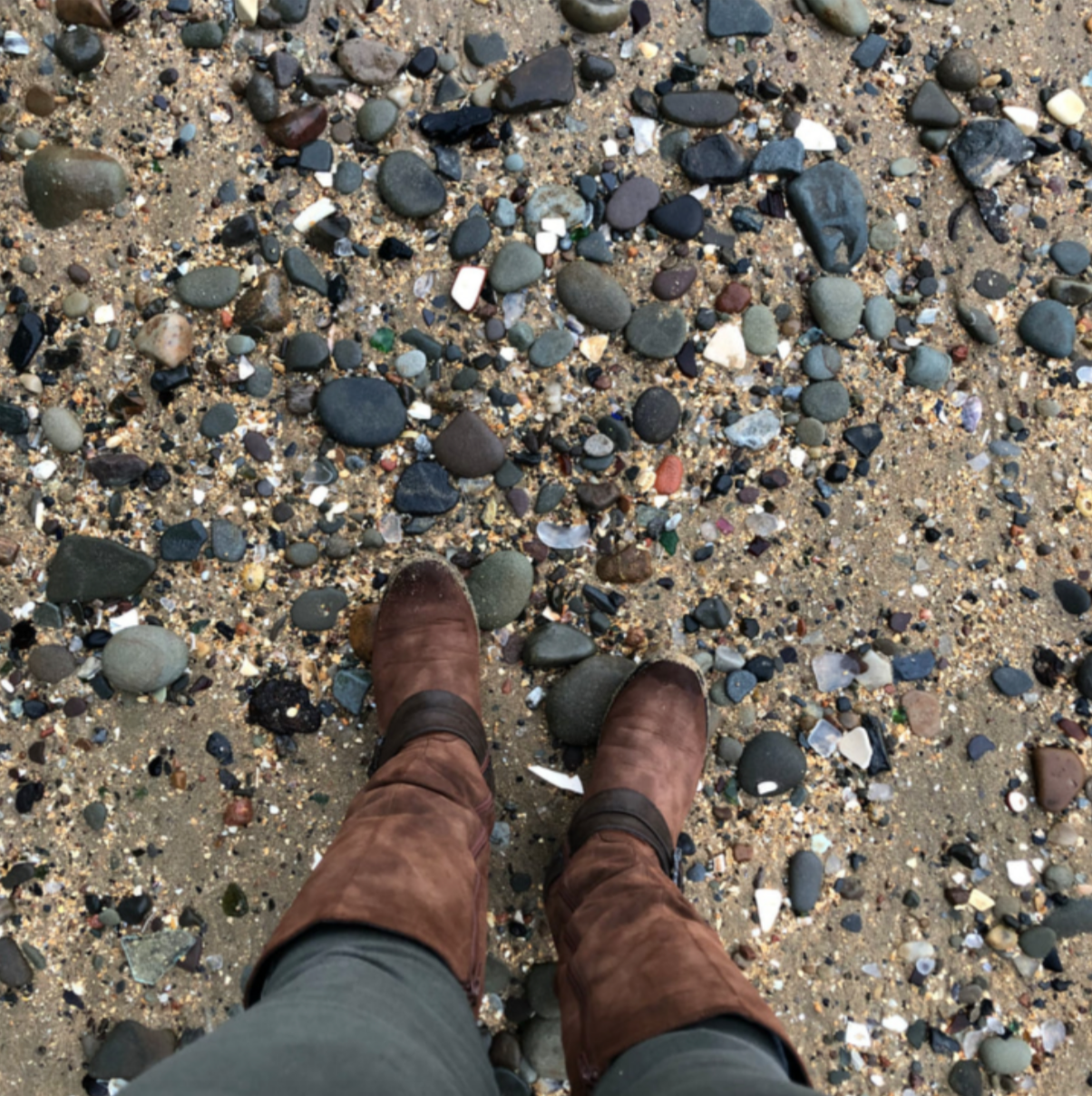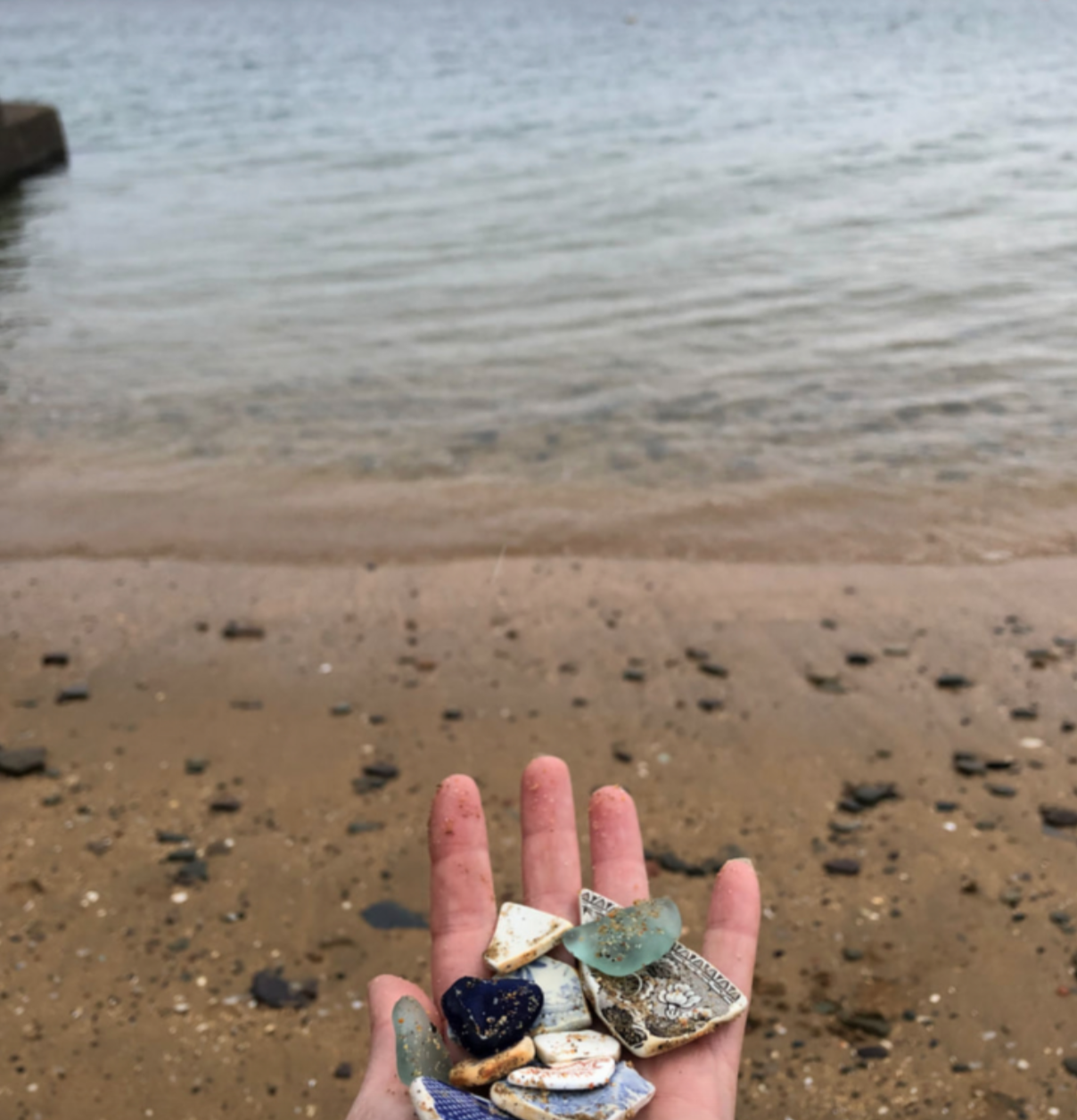Gifts from the sea
There is nothing better than coming back from the beach with sandy pockets, burgeoning with gifts from the sea but, as with everything, we must collect responsibly and always ask, ‘how will my actions impact the natural world around me?’ We are all magpies; we search for treasure, scouring the shoreline for a glittering shell or a salt-encrusted sea-worn pebble. And that’s fine, as long as we do so responsibly.
Shells
Shetland’s shores are a veritable treasure trove where the discerning eye can pick out sea glass, precious stones, shells and, most highly-coveted of all, the elusive grottie buckie (cowrie shell), thought to bring luck and prosperity to the finder. It’s supposed to be good luck to carry one in your purse, so that’s precisely what sits in mine; alongside the loose change and crumpled receipts.
Taking a few shells from a beach would have little impact if you were the only person doing it, but, as collecting becomes more popular, it becomes more of an issue from an ecological point of view. Fuelled by popular social media sites such as Instagram, where a flat-lay of shells and sea glass can accumulate many ‘likes’, more and more people are heading to the beach and unleashing their inner magpie. One solution is quite simple; collect your finds, snap them in-situ and then leave them where they are for someone else to discover. And by someone else, I mean someone who lives on the shoreline. Shells create homes for many species, as well as breaking down, where minerals and nutrients all add something to the complex shoreline ecosystem.
Sea glass and pottery
Sea glass and pottery has always fascinated me. I seem to have been collecting it since I was a child, but I don’t have a collection? I guess it gets collected at one end of the beach and discarded at the other end before the trudge back home. The joy is always in the finding. I’m frequently asked about sea glass and pottery, and where it comes from. With sea glass, this is simple; glass, broken or otherwise, finds its way into the sea in the same way as other pollution (I’m thinking about plastic here), it then breaks down. Tossed and churned around by the ocean before being spat out onto the beach, ready to be discovered.
Sea pottery – broken pottery, porcelain, tile and earthenware – is slightly more baffling than glass, namely, how do plates, bowls and crockery find their way into the ocean in such vast quantities?
Sea pottery is beautiful; the tumbling motion of the sea deglazes, softens the edges and creates an altogether ‘chalkier’ appearance. This process, like a giant rock tumbler, takes decades. It makes you wonder ‘where did this come from?’, ‘who owned it?’, and ‘what did their lives look like?’.
It’s most likely that the piece of sea pottery – or glass – is found close to where it was discarded. It is most likely thrown or fallen in the sea or, perhaps, it may have washed ashore from the wreck of a ship? There are a thousand different reasons why it could have ended up ion the sea, and yet, no answers.
Much of the sea pottery found here dates to the 18th and 19th-century when access to mass-produced pottery became more widely available. That said, some of the pottery found may be much older, dating to the 16th and 17th centuries when Hanseatic traders were visiting Shetland – this type of earthenware pottery is known as Werra Ware.
Sea pottery is popular is jewellery making, and you can buy locally-made pieces from Red Houss Shetland.
Russian corks
My favourite of all finds has got to be Russian corks; small round fishing floats, made from a synthetic material, with a hole in the middle that was used on fishing nets. Fishing nets were traditionally lined with cork floats, and during the Cold War Russia lost access to the cork markets of Spain and Portugal meaning that they had to create their own synthetic net-floats.
These still wash up on the shores in Shetland and, as they are synthetic, do not degrade in the same way that cork floats do. If you’re lucky, you can still find a complete (meaning not worn down and broken) cork float, although these are few and far between. Russian corks are far more common although, today, these are becoming harder to find too.
My husband hates them. I string them up in garlands around the garden, and we play a game of cat-and-mouse; meaning he cuts them down as quickly as I can string them up...
Glass fishing floats
These are a rarity today but used to be commonly found around the shore – in fact, the sea glass you see may have, at one time, been a glass fishing float. These were used before the advent of plastic or metal buoys to give nets buoyancy in the water.
These were first developed in Norway in the mid-19th-century and became commonly used by fishermen well into the 20th century.
I’ve never found one on the beach, but I have bought a few from auction, paying eye-watering sums of money to have a little piece of maritime history in my home. I once found a stash of beautifully coloured glass floats in the outhouse of a ruined house. However, I left them there to their tangle of nature; following the unwritten rule stating that anything found above the tideline, cannot be claimed by the finder.
Eshaness
Message in a bottle
I’m always on the lookout for messages in a bottle; handwritten notes flung out to sea in the hope that someone, somewhere will find them.
I’ve found one of these; unfortunately, I found it close to where it was thrown out to sea by a schoolboy just a few weeks earlier. I threw this one back out to sea in the hope that, someday, it might wash up somewhere a little more exotic!
Most famous for using the sea as a communications vessel were the islanders on St Kilda who developed the ‘St Kilda Mail Boat’. Communication from St Kilda was difficult, so remote was the island that St Kildans would put their correspondence into a waterproof container attached to a homemade buoy. They would then launch it into the sea in the hope that it would wash ashore so that whoever found it, would be able to forward on the correspondence.
This method was developed in the late 19th-century and was used on the island frequently. Some of the Mail Boats washed up in Shetland, following the tides and currents north. One report from c. 1904 states that:
“There was picked up on St Ninian’s Isle Dunrossness, a St Kilda mail bag. The ‘bag’ is that usually employed by the St Kildians to communicate with the outside world, consisting of a sheepskin bag inflated to which was attached a tin canister, wrapped round with cotton wool, and covered with cotton sewn around it end tarred, the served with stout twine. The bag was forwarded to Lerwick Post Office. The tin was found to contain two letters and eight postcards, which were duly forwarded to their destination. A shilling was also enclosed. The bag had been sent off on 21st June so that it had taken two months and one day between St Kilda and Shetland.”
Sea Beans
Sea Beans are another rarity that I continuously scan the tideline for on walks along the beach. Sea beans are small, smooth, glossy seeds that fit in the palm of the hand. They are rich brown in colour and lightweight. Thought to bring luck, these make a remarkable journey, crossing the North Atlantic, to reach our shores. They are tropical seeds native to Central and South America and the Caribbean and are often heart-shaped, which is why they are sometimes known as sea hearts.
Again, I’ve never found a sea bean either. Still, I was fortunate enough to inherit one from the collection of local botanist and naturalist, Walter Scott, who has given more to the understanding of Shetland’s native flora than any other.
When you take a walk along the shoreline, you’re never sure what you’re going to find. Sometimes finds can be dangerous, explosive relics of war and conflict are sometimes discovered, and bomb disposal is brought in to detonate them safely. As a rule of thumb, if it’s military green and metal – avoid it and notify the Coastguard.
On other occasions, beautiful objects are discovered. One year, someone carrying out a beach clean found a boxed Tiffany engagement ring – which begs the question, whatever happened to that couple?
And that’s the beauty of these gifts from the sea; they capture the imagination and lead us to ask searching questions, opening up our minds to wonder like a child. They make us consider the journey these things took to reach our shores, and we wonder about the people who owned them and what their lives looked like; they bed us to a time and place, and that’s the real magic.













